MOVIE REVIEW – “Top Gun” fans have been waiting more than three decades for a sequel to the literally “high-flying” action movie of the 1980s, and after rumours, a long shoot and years of delays with Covid, “Top Gun: Maverick” is finally here – and it’s worth the wait.
Like the sleek and killer fighter jets featured in the film, this one shows that it was designed from the ground up for maximum effectiveness. But just because it can sometimes feel like you’re riding a well-conceived rollercoaster, it doesn’t mean the thrills aren’t accurate or lacks the realism it needs. Although the wooden one-shot story is extremely predictable, it still manages to be one of the most impressive films of the year thanks to a bloody professional performance from movie star Tom Cruise and some absolutely stunning aerial action. In short, this sequel delivers everything fans have been waiting for. You have to see it to believe it.
Maverick never gives up
More than thirty years after the original film’s events, Pete “Maverick” Mitchell (Cruise) is a Navy test pilot, pushing the next generation of aircraft to the limit over the Mojave Desert. But when he pisses off a heavy-handed admiral (Ed Harris) by going a little overboard with the test flying, it looks like Maverick will have to retire for good. But just in the nick of time, he receives an order from his former rival/admiral Tom “Iceman” Kazansky (Val Kilmer), now an admiral himself, to enrol in Top Gun fighter pilot school and use his experience from the first film to train an elite squadron of fresh graduates for a dangerous new mission. One of those recent graduates is Bradley “Rooster” Bradshaw (Miles Teller), son of Maverick’s former flying partner Goose, who died in the original film. Rooster and Maverick have a complicated history – one that Rooster’s rival, the cocky “Hangman” (Glen Powell), quickly discovers and tries to turn to his advantage.
A mission familiar from Star Wars
Structurally, this film is almost exactly the same as the first: a group of talented pilots spend most of “Maverick” participating in training exercises, competing for power and position, and learning the skills they will need later. The most significant difference is the final mission. In the original, Iceman and Maverick are literally deployed at the graduation ceremony on a mission they didn’t know was coming. Here, the mission runs throughout the film – everyone knows exactly what is expected of them and how impossible it seems. The goal is to destroy a heavily guarded, unsanctioned uranium plant before it is put into operation. The pilots must penetrate enemy airspace, fly through a long canyon at a maximum altitude of 100 feet to avoid radar detection, and use missiles to perform what is effectively a ‘Star Wars’, blowing up the ventilation shaft of an underground bunker and then blowing the plant to pieces before anyone realizes they are there.
It’s like a heist movie
“Top Gun: Maverick” writers Ehren Kruger, Eric Warren Singer and Christopher McQuarrie have made it all feel like a heist movie, with detailed visuals of the canyon and a training ground that mimics the exact layout. Having the pilots try to complete this course repeatedly is one of the oldest tricks in storytelling, creating tension and showing how challenging the mission’s parameters really are. Ultimately, though, you know where this is all going. You probably haven’t seen a Tom Cruise movie since the original Top Gun if you think Maverick will sit on the bench as a teacher for the entire film and not participate in more hair-raising exercises and missions.
Speaking of the original, the sequel doesn’t just try to mimic the feel of the first film with its general structure. The opening scene is a modernized version of the memorable intro to the ’86 film, with lovingly evocative shots of planes preparing to take off from the runway of an aircraft carrier and Harold Faltermeyer’s epic instrumental theme song in the background.
For those who haven’t seen the original in a long time, this scene may seem like a sequence of images built on top of each other. But Joseph Kosinski and director Tony Scott have a very different idea about the stylistic details of such a film. The original “Top Gun” was full of silhouettes and heightened colours to stylize the drama – the actors were often bathed in purple, red and neon and drenched in sweat both in the cockpits and the control rooms. Scott, who was long thought to be returning to direct a sequel before his death in 2012, has given the opening scene an almost surreal smoky-yellow colour – as if we were watching a scene from Apocalypse Now.
On the other hand, Kosinski is more attached to realism – his cinema is a film of deep blacks, technicolour greens and muted greys. He is more interested in capturing clean lines and visuals than in enhancing situations with flashy colours. This cleaner and more unified approach suits the precision of the action sequences, but it also makes the rest of Top Gun: Maverick feel a little sterile by comparison.
The two femme fatale have been replaced harshly
It’s a bit sad that we no longer get to see the female characters from the first film. Although there are plenty of references back to the first film, it’s a shame that Meg Ryan, who initially brought real fiery energy and soul-stirring sadness to the role of Goose’s wife in the first film, doesn’t appear here. The decision made by her character before the movie begins hangs like a spectre over Maverick and Rooster’s relationship, and it’s easy to imagine that this film could have been a big moment for the actress had she been in it. She may have been asked but turned the opportunity down. In 2019, she told The New York Times that she turned down a movie role, so it’s possible she simply wasn’t interested.
However, a little harder to swallow is that Kelly McGillis, who played Maverick’s love interest and civilian trainer Charlie in the first film, is also not in the movie and only appears briefly in recycled footage from the ’86 film during a flashback reverie. McGillis says that he was not asked to reprise his role in Top Gun: Maverick, and to a certain extent, I can understand that. This film is about a different era in Maverick’s life, so the idea of including an ex-girlfriend in the story might not have been too logical. Still, it’s a bit of a bummer that two of the major female characters from the original film don’t have a place in this sequel.
But while the women who appeared in Top Gun are in the background this time, one of them, who was only mentioned, actually makes a live appearance here. Jennifer Connelly plays Penny Benjamin, the admiral’s daughter, who Maverick had a crush on when she was younger. Penny now owns a San Diego bar, The Hard Deck, the local hangout for pilots attending Top Gun school. She’s a single mom who has a good relationship with her teenage daughter. Despite Penny’s several romantic escapades with Maverick over the years that ended in heartbreak, the two can’t seem to stay away from each other. Connelly brings a welcome warmth and down-to-earth humanity to a cast full of larger-than-life characters; a lovely rendezvous scene on a sailboat proves that she has her own interests and hobbies, and Maverick has much to learn from her.
The emotional thread
“Top Gun: Maverick” often tries to bring real drama into the story – with varying degrees of success. Kilmer, who has had significant health problems in recent years (as chronicled in the fascinating documentary “Val”), returns as Iceman, and whether you consider his return effective, manipulative or a combination of the two, it was an undeniably powerful and effective idea to have the actor reprise his role in this context.
Goose’s death looms large over the film through many of the old photographs and conversations. Rooster has with him about what happened, and Maverick still says on the air, “Talk to me, Goose,” which alone might be enough to start a tear in some viewers’ eyes. Miles Teller gives the best work of his career here (despite his character being written somewhat inconsistently). Still, while both Teller and Powell are charismatic actors, the Rooster vs Executioner dynamic that becomes the film’s pivotal rivalry lacks the depth of the first film’s Maverick vs Iceman clashes. The supporting cast (Monica Barbaro, Lewis Pullman, Greg Tarzan Davis, Jay Ellis and Danny Ramirez) – like the supporting cast of the original film – is not given enough time to make a significant impact on the plot.
But this is first and foremost an action film, and I am pleased to say that the film does well in this respect. Paramount has gone to great lengths to emphasize that many of the flying scenes are shot realistically, keeping with Cruise’s obsession with doing stunts himself that no other American A-list actor would attempt. The action feels alive, exciting and immersive, with hardly any CGI, and Kosinski has a masterful hand in directing the scenes of simulated or real clashes between fighter jets and the experience of flying with these monsters. Since much of the film takes place in the air, it is crucial that the aerial combat feels spontaneous and fluid, and it does; in particular, the final, real mission felt professionally planned and executed.
“Time is your enemy”
For Cruise, this film is another opportunity to prove to the world that, as he approaches his 60th birthday, he is as relevant and vital to the Hollywood ecosystem as ever. This sentiment is echoed in the film itself: it is full of reflections on ageing and staying relevant in this ruthless industry.
Interestingly, as in the first film, the enemy country is not explicitly named in this sequel. The film is more interested in meta-exploring Cruise’s current situation than in upsetting any international market and hindering the film’s global distribution. “Time is your enemy”, Maverick explains to the young pilot, and given how integral he becomes in the final act, the film serves as a Maverick-like rebellion against the notion of time in a metaphorical sense and a celebration of Cruise’s continued commitment to risking his life on screen for our entertainment.
Top Gun Maverick, and Tom Cruise himself, fulfilled his mission with flying colours to entertain us with a high standard of entertainment, with stunning visuals, aerial attractions and action sequences, a logical and well-matched continuation of the original film’s story and good performances overall. Although the simplistic and, in places, somewhat overly heroic story is entirely predictable and the supporting cast is not given enough space, Tom Cruise and his crew can be forgiven for this because, in every other respect, we can be delighted.
-BadSector-
Top Gun: Maverick
Direction - 9.2
Actors - 8.4
Story - 7.5
Visuals/Music/Sounds - 9.2
Ambience - 8.2
8.5
EXCELLENT
Top Gun Maverick, and Tom Cruise himself, fulfilled his mission with flying colours to entertain us with a high standard of entertainment, with stunning visuals, aerial attractions and action sequences, a logical and well-matched continuation of the original film's story and good performances overall. Although the simplistic and, in places, somewhat overly heroic story is entirely predictable and the supporting cast is not given enough space, Tom Cruise and his crew can be forgiven for this because, in every other respect, we can be delighted.

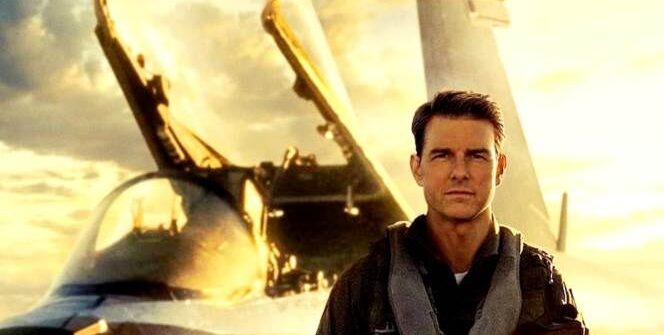
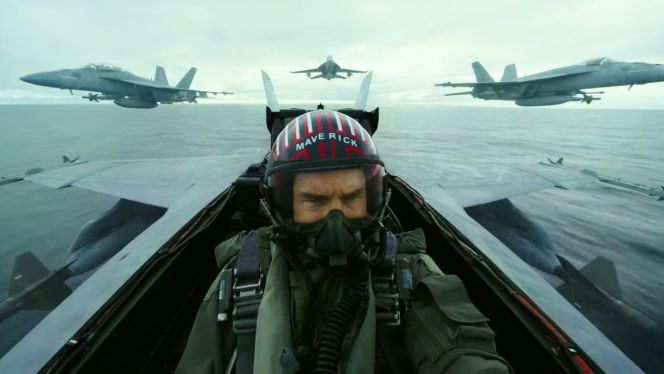
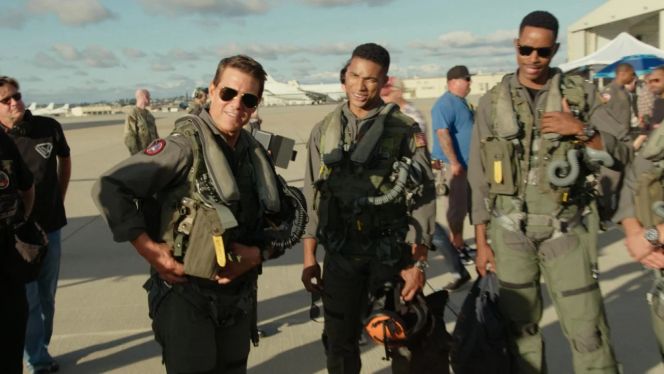
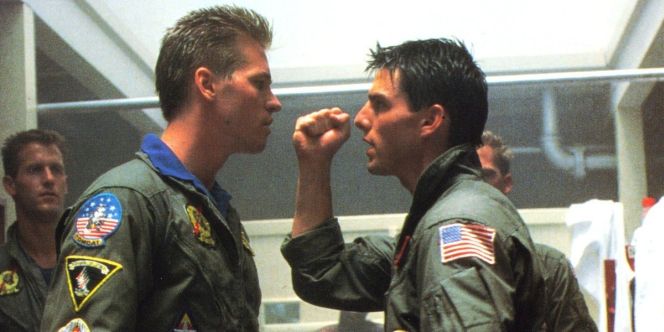
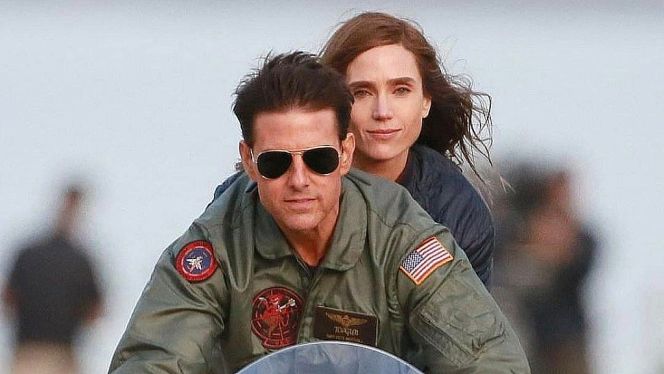
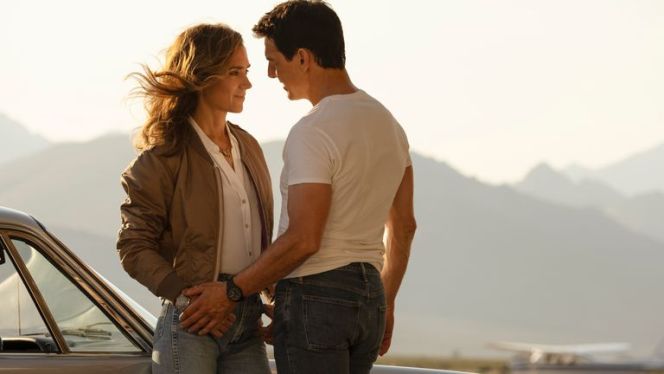

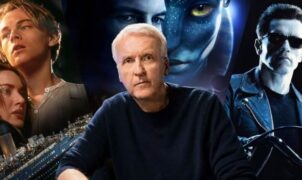




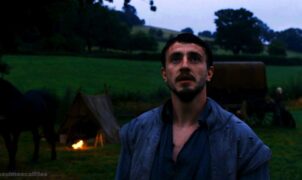

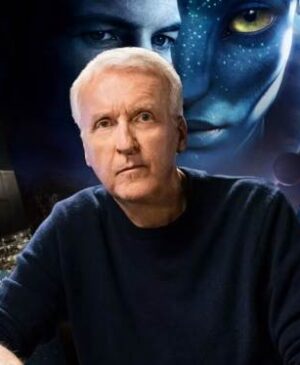
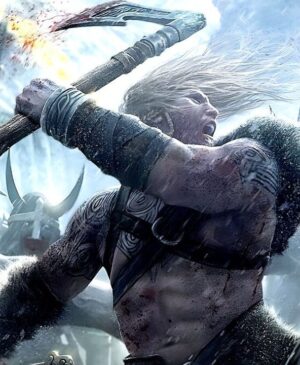

Leave a Reply